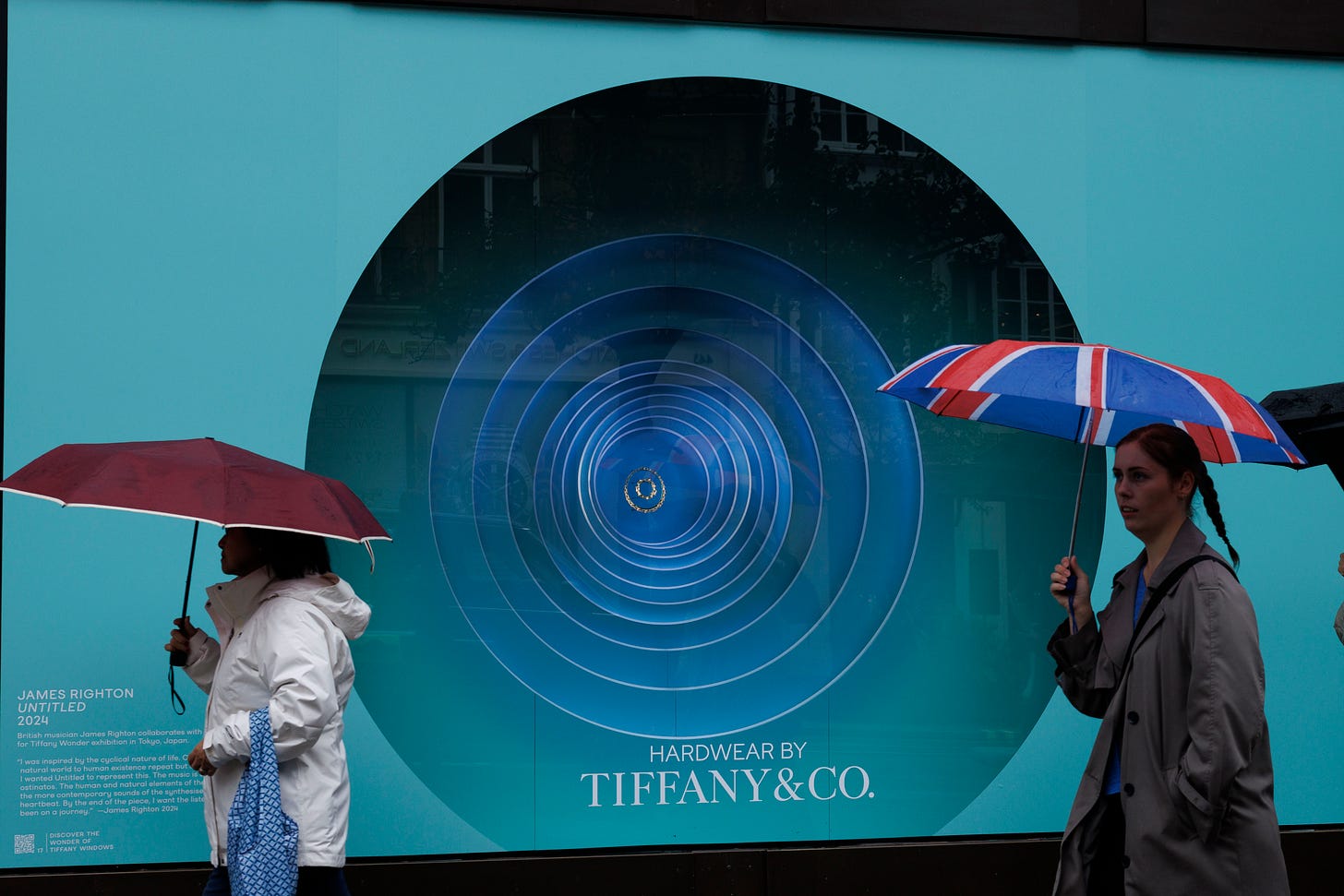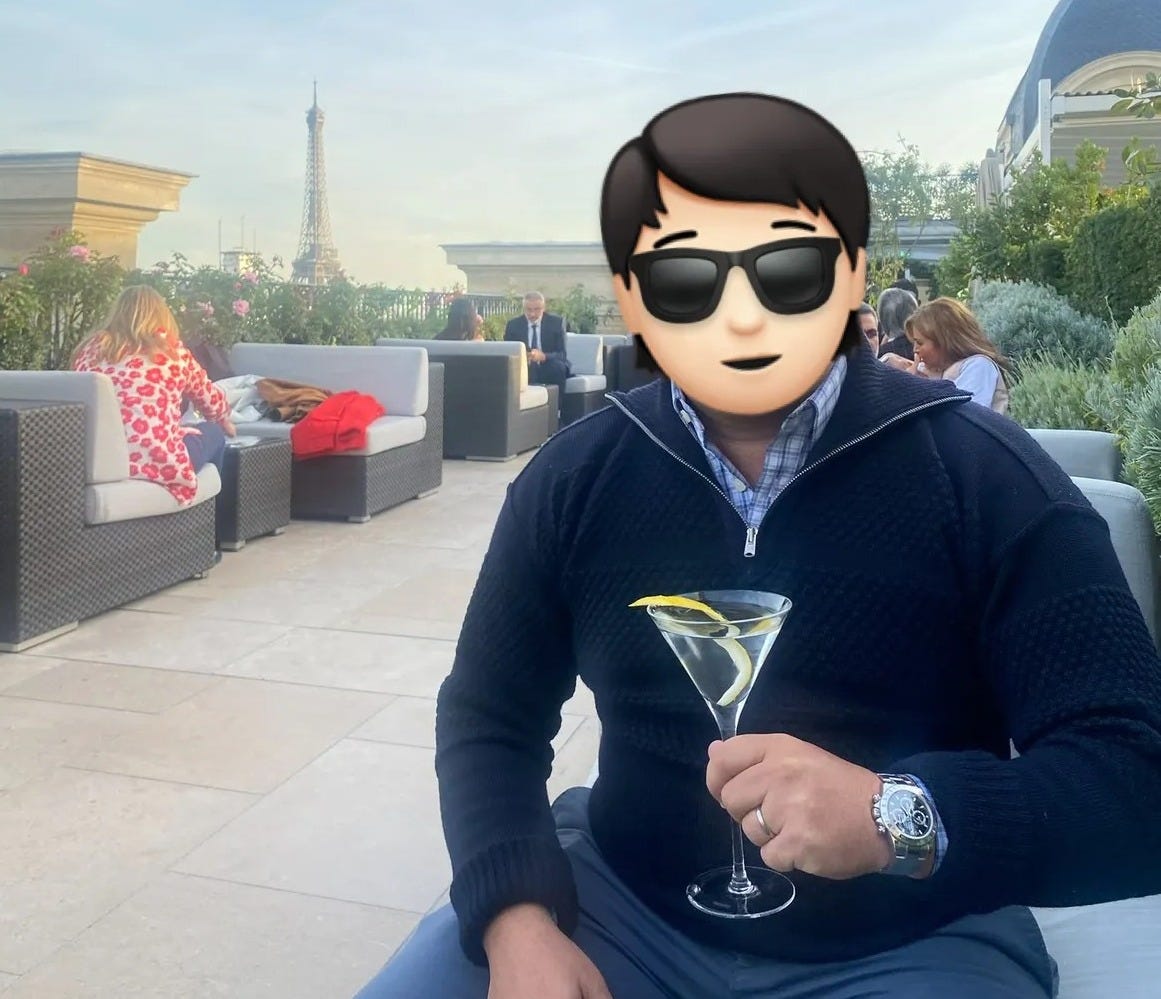Data and dinner gossip: the luxury short-seller betting against LVMH
Anonymous short-seller Intern Pierre on how he decides which luxury brands are on the way down
Dark Luxury recently reported that hedge fund Marshall Wace had a £300 million short position on Kering, the conglomerate which owns Gucci, Balenciaga and Bottega Veneta. To “short” a stock means to bet that it will fall. It’s one of the riskiest trades in finance but one that increasingly targets the largest luxury groups as investors smell weakness in once rock solid firms.
Who are these people? How do they work? And how do they develop their investment strategies? To find out more about these secretive and potentially influential players, Conrad interviewed Intern Pierre, the anonymous author of a Substack purporting to be a short-seller, who caught our attention a month ago with his frank and rigorous analysis of LVMH and other luxury firms.
Now read:
While Marshall Wace reportedly used a top secret algorithm fed by trading recommendations to build its $70 billion fund, Intern Pierre claims to have a rather more straightforward, but no less effective, method: “I overheard at dinner a woman who said she’d say no if her boyfriend gave her a Tiffany ring”, he recalls. “That stuck with me”.

LVMH’s 2021 purchase of the American jeweller Tiffany & Co for $16 billion was the largest deal of its kind at the time and its fortunes are critical to the overall health of the group. The offhand remark triggered Intern Pierre’s deeper dive into the brand’s relevance, whose acquisition and relaunch has been troubled from the start. “I get a lot of my ideas from observational and more qualitative stuff”, he says. “On the short side, I look for companies that are almost like an ice cube melting and where the deterioration has already started”.
Moët as a mixer
It seems that Intern Pierre’s core case against LVMH is that its flagship brands simply don't feel or behave in a very luxurious way any more. The company’s mass-market tilt is undermining its aura of exclusivity, he argues. “In Monaco, I saw bars using Moët as a mixer. That’s not a good look”. On a trip to the Louis Vuitton flagship store in New York a sales associate told him that one of the best-selling items there was a bar of chocolate. With Veuve Clicquot, another key LVMH brand, he says: “In Europe, if I buy someone a bottle of Veuve, it just means I haven’t put much thought into it”. He adds it’s possible to buy something more interesting (and which therefore demonstrates more taste) and better quality, for a lower price.
On his Substack, he often describes simply going to a boutique and taking photos to inform his investment decisions. At Louis Vuitton in the Middle East, he noticed what Alfred saw in the Selfridges concession in London recently, €1,600 logo T-shirts hanging limply on rails. “In the Middle East, where they spend a lot of money and don’t even look at the price tags, the stores were empty”, he says. In contrast, he’ll take a snap of lush piles of cashmere jumpers, softly tailored silk and linen suits on the shelves and rails of a nearby Brunello Cucinelli boutique, and the message is clear. One brand is clearly more “luxury” than the other.
Value for money is also another factor. Even the fabulously wealthy make price and brand comparisons. At a recent visit to the Louis Vuitton store in Miami he says he asked to look at the watches and was shown a piece retailing for $80,000. “There’s usually some kind of gate keeping going on for this kind of product”, he says. The fact that he was shown it at all was for him a “red flag” which indicates serious problems with demand. Sales associates usually perform rigorous checks on the customer’s buying history to be even considered for the most exclusive items. Moreover, for that kind of money it’s possible to get a beautiful watch from a pure-play brand such as Patek Phillippe, which has more “if you know, you know” cachet amongst wealthy consumers. “I just don’t see people spending that kind of money on a lot of these products”.





